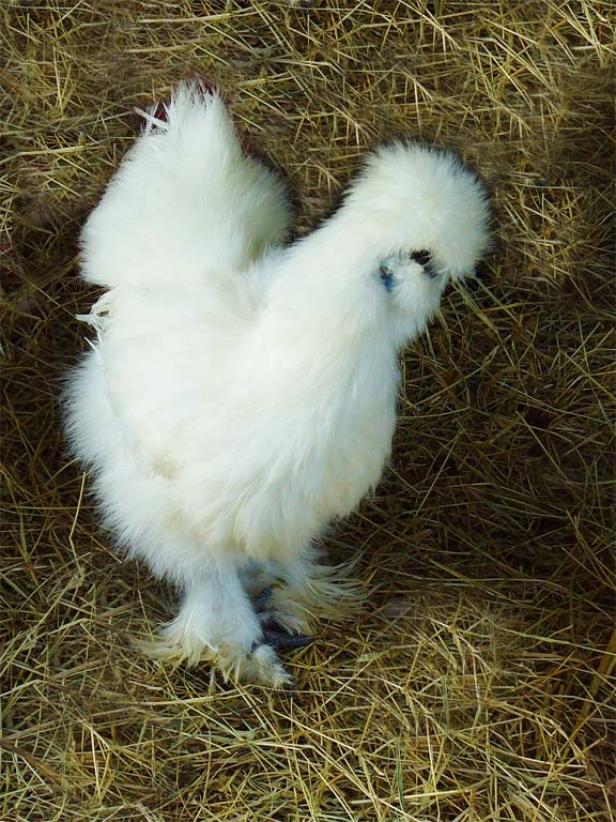
Silkies are beautiful. (Photo by Kim Moline)
Calm, friendly and happy to be handled, silkie chickens have become an increasingly popular breed for backyard flocks. With black skin (as well as black bones and meat) and well known for their soft, fluffy plumage, this bantam breed is as cute as they come and although egg production is far less than what is seen from many breeds, for those interested in raising chickens as pets, silkies are worth consideration.
This five-toed breed can be found in a variety of colors, including black, white, buff, blue, partridge and lavender. The soft feathers, similar to the down of chicks in other breeds, is appealing to the eye and irresistible to touch, but lacking barbicels, the hook-like structure that gives typical adult feathers their rigid form, silkies are unable to fly even short distances. In the wild or for the free-ranging silkie, this limitation makes them especially susceptible to predators. Coupled with their docile nature, this also places silkies low in the pecking order in backyard coops and prone to abuse when housed with more aggressive breeds.
Maternal by nature, silkies are among the broodiest of breeds. In many coops with silkies, these motherly birds will take over brooding duties from other hens, making them a good choice for those who are interested in hatching their own chicks. Their own eggs are significantly smaller than those of standard chickens (about half the size of a typical chicken egg) and the broody nature of the breed limits egg production to about a hundred eggs a year, compared to about 250 eggs laid by the average hen.
Despite being poor layers, silkies are an increasingly common selection when adding chickens to a backyard flock. While early adopters of the backyard chicken movement were most often drawn to the hobby by the lure of fresh eggs, today’s chicken enthusiast is just as likely to be interested in chickens for their pet-like qualities. Friendly toward humans, beautiful to behold and docile enough to be handled by careful children, silkies are a great choice for the involved family interested in regular interaction with the flock.
When adding silkies to an existing flock, it’s best to include more than one. Silkies are “birds of a feather” and prefer to socialize with other silkies. A solitary silkie is also much more likely to be singled out for abuse by larger breeds. When introducing silkies to the flock, keep them in sight, but separated from other chickens until their presence is accepted and monitor carefully for the first few weeks for signs of damage from other birds.
If you aren’t sure whether a silkie is a good choice for your coop, ask someone who already has them. For silkie fans, to know them is to love them. Charming, sweet and super cute, silkies are a winning choice when seeking pet-quality poultry.
Striking Features: Black skinned bantam with soft, downy feathers. Feather-footed and five-toed.
Egg quality: Small, cream-colored eggs.
Temperament: Extremely social and easily-handled.
Aesthetic Appeal: 8 out of 10
Envy Rating / Wow Factor: 8 out of 10
Originally: Chicken Breeds: Silkies

